
This is a shot of the altar at the Cristo Rey Monastery Chapel here in San Francisco. I'm planning on spending a few hours there with my camera soon and will be making a slide show of the results and posting it on my website...



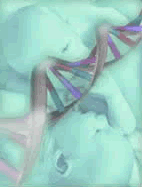
The problem with the argument these gentlemen are advancing lies primarily in this statement:C. Ward Kischer, PhD, human embryology professor emeritus, and Fr. Joseph Howard, M. Div., of American Life League, have issued the following statement regarding their analysis of an Altered Nuclear Transfer-Oocyte-Assisted Reprogramming (ANT-OAR) process proposed by Dr. William Hurlbut. This process, by which an experimental protocol would generate presumed pluripotent cells, but presumably not human embryos for research, raises many serious moral concerns and should be especially troubling for Catholics in the field of science. Dr. Kischer and Fr. Howard address the moral concerns of the proposal and reiterate the teachings of the Catholic Church when dealing with such delicate matters involving the gift of human life.
C. Ward Kischer, Ph.D., states that, “It appears that within an experimental protocol of ANT-OAR, through cloning, not all in the progeny of blastomeres may become genetically modified and therefore would likely be totipotent. Such a totipotent blastomere would indeed be equivalent to a human zygote who is a human embryo.”
For our analysis, the definitive question that arises is the following: Does the absence of the maternally imprinted gene products that are only produced when genes are inherited from the father impact the system dynamics of the whole parthenote ab initio substantially changing it so that the parthenote becomes a tumor, or does their absence only lead to a defective part of an embryo that becomes a tumor eventually killing the whole?
In response, we return to a key study, already mentioned above, that has shown that the absence of both paternally and maternally imprinted genes impacts the development of the embryo from the very beginning at the two-cell stage.19 Moreover, the absence of the maternally imprinted molecules impacts that parthenote at the level of the whole since the scientific evidence suggests that the imprinted genes regulates the overall number of cells that develop in the blastocyst. In addition, another study has demonstrated that the organization of a parthenote differs from the organization of a normal embryo from the very start: In normal development, when the single-celled mouse zygote divides into two cells, these two cells, called blastomeres, are already not identical. One of the two cells divides ahead of its sister and tends to contribute most of its cellular descendents to the embryo proper, whereas the other, later dividing cell, contributes cells predominantly to the extra-embryonic tissue including the placenta.20 However, in contrast, when a single-celled mouse parthenote divides into two cells, these two cells do not behave in the way that normal blastomeres would behave.21 The first cell that divides does not necessarily contribute its descendents to the embryo proper.This is a small but significant difference in organization that points to the difference between the parthenote and the normal embryo at the very earliest stages of the development. In sum, all of this data suggests that the forces that lead to tumor formation are already present at the earliest stages of embryonic development. In other words, the system dynamics of the parthenote as a whole already differs from the system dynamics of the normal embryo since normal embryos do not become teratomas. Like the complete mole, a parthenote is not an embryo.
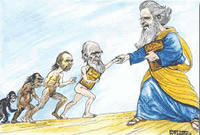
...There appears to exist a nagging fear in the Church that a universe, which science has established as evolving for 13.7 x 1 billion years since the Big Bang and in which life, beginning in its most primitive forms at about 12 x 1 billion years from the Big Bang, evolved through a process of random genetic mutations and natural selection, escapes God’s dominion. That fear is groundless. ... Perhaps the following picture of God’s relation to the created universe, as that universe is seen by science and interpreted by a religious believer, may help to assuage that fear. In the universe, as known by science, there are essentially three processes at work: chance, necessity and the fertility of the universe. The classical question as to whether the human being came about by chance, and so has no need of God, or by necessity, and so through the action of a designer God, is no longer valid. And so any attempt to answer it is doomed to failure. The fertility of the universe, now well established by science, is an essential ingredient, and the meaning of chance and necessity must be seen in light of that fertility. Chance processes and necessary processes are continuously interacting in a universe that is 13.7 x 1 billion years old and contains about 1022 stars. Those stars as they “live” and “die” release to the universe the chemical abundance of the elements necessary for life. In their thermonuclear furnaces stars convert the lighter elements into the heavier elements. There is no other way, for instance, to have the abundance of carbon necessary to make a toenail than through the thermonuclear processes in stars. We are all literally born of stardust.I think Fr. Edward Oakes makes a more coherent statement....but Fr. Coyne does make some good points!
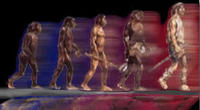
For one thing, the Church has no "doctrine" on evolution, any more than it has a doctrine on tectonic plates or a magisterial teaching on how human consciousness arises from the electrical firings inside the neurology of the brain. These matters are both beyond the competence of the magisterium and are irrelevant to salvation, anyway.
Secondly, even if the magisterium did have an official teaching on evolution, it does not officially revise its "views" on matters of science by having a cardinal, however "leading," writing an article "in propria persona" -- on his own behalf -- and using an op-ed piece in a secular newspaper to boot.
That said, I believe that Cardinal Schönborn's essay "Finding Design in Nature" in the July 7 issue of the Times makes a valid point, roughly the reverse side of the coin of what Pope John Paul II said in his now-famous letter to the Pontifical Academy of Sciences in October of 1996.
John Paul said at the time that "evolution" -- which, as Cardinal Schönborn rightly notes, the Holy Father left undefined -- can no longer be considered merely a "hypothesis" because so much data have now come in to confirm the theory.
The problem is that this very short letter brought some misinterpretations of its own in its wake -- because of the obnoxious way some Darwinians like to hijack the word "evolution" for their own atheistic purposes -- and it is those false conclusions, as I see it, that the cardinal was trying to warn against.
But, no, I do not see the cardinal's quite legitimate warning as a "new chapter in the evolution-vs.-creationism debate."
First of all, if "creationism" means six-day creation as a few Christian fundamentalists still hold, then there is no chance in the world that the Catholic Church will join that cause. But "creationism" can also refer to the total ontological dependence of the universe on God's creative act of will, and nothing in the theory of evolution can threaten that essential doctrine of the Catholic faith.
Remember that, according to St. Thomas Aquinas, even if the world happens to be temporally eternal, such an eternity of time would not undermine the created contingency of the world, utterly dependent on God's free decision to create it.
NCR: What did you think of The New York Times article by Cardinal Christoph Schönborn of Vienna on evolution?Good stuff! Go read the rest and copy it to your harddrive!
Cabibbo: Two things struck me, one positively and the other negatively. Positively, it opens a very interesting discussion. But I cannot agree with the way he handled the address of John Paul II to the Pontifical Academy of Sciences in 1996. I don't know if the problem was in a bad translation from German, but he calls it "vague and rather unimportant." I've never considered it that way, in fact I have always considered it very important. Not only for the now famous statement, that evolution is "more than a hypothesis," but also for what comes next: "It is indeed remarkable that this theory has been progressively accepted by researchers, following a series of discoveries in various fields of knowledge. The convergence, neither sought nor fabricated, of the results of work that was conducted independently is in itself a significant argument in favor of this theory," the Pope said. With these words the Pope demonstrated a clear understanding of the scientific method, on how an hypothesis can be transformed into a widely accepted fact. This allocution is in fact a very articulated expression of the thought of the late John Paul II.

My own view is that God does act within nature and that Darwinian evolution is the result. Note, however, this is a theological claim, not a scientific one. Belief in God can inspire scientists to pursue specific scientific research proposals, but such research cannot include reference to God and remain within science. What this means is that teaching ID in public schools is not a matter of fairess to competing theories since ID is not an alternative biological theory. It is at most a theological claim in disguise. The worst problem is that ID proponents endorse this disguise by not telling us what they mean by agency. This strategy offers an apparent apologetic hope to believing Christians but it fails to deliver on that hope. This makes Christianity seem foolish to agnostic scientists who might otherwise have listened to us, and it promises only eventual disappointment to Christians who believe in it.This is a pretty good issue...don't miss it!

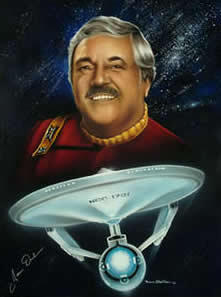
Once, at a convention of astronomers, James Doohan was asked what it felt like "to be beamed." The actor who'd abided by the order, "Beam me up, Scotty," countless times on the Star Trek set reported that it was "very pleasurable."
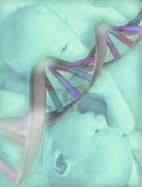
As described in the President's Council on Bioethics's recent White Paper, altered nuclear transfer (ANT) is a broad conceptual proposal for producing pluripotent stem cells without creating and destroying embryos. In the description set forth below, we outline a research program for a form of ANT that should allow us to produce pluripotent stem cells without creating or destroying human embryos and without producing an entity that undergoes or mimics embryonic development. The method of alteration here proposed (oocyte assisted reprogramming) would immediately produce a cell with positive characteristics and a type of organization that from the beginning would be clearly and unambiguously distinct from, and incompatible with, those of an embryo. Incapable of being or becoming an embryo, the cell produced would itself be a pluripotent cell that could be cultured to establish a pluripotent stem cell line. Significantly, this cell would not be totipotent, as a zygote is.
The joint statement is endorsed by a panel of ethicists, which includes William May, Fr. Nicanor Austriaco, OP, Germain Grisez, William Hurlbut, Fr. Kevin T. FitzGerald, S.J., Fr. Kevin Flannery, S.J., Edward J. Furton, Alfonso Gomez-Lobo, John M. Haas, John F. Kilner, Patrick Lee, Fr. Gonzalo Miranda, L.C, Archbishop John J. Myers, Fr. Tad Pacholczyk, and Fr. Thomas Williams... all who endorse the ANT procedure known as oocyte assisted reprogramming.
There is a page set up at Communio, which has several arguments against the proposed procedures, as well as some rebuttal. PLEASE NOTE! Communio does not endorse the joint statement.

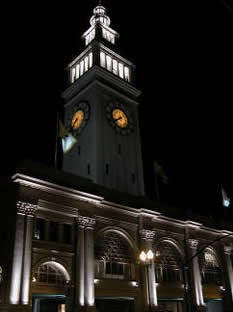

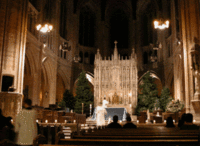
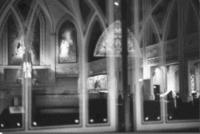

For those of you following the Kelo v. New London fiasco, wherein the Supreme Court ruled that the powers of eminent domain can now be stretched to the point where private property can be seized by a city to turn it over to commercial developers, below are some good sources that cover what this may mean for Church property as well as religious owned property (ie, convents, monasteries).
This isn't just a threat to people who own homes. Property owned by churches and religious is tax-exempt. Therefore, this property is very very vulnerable to confiscation by the state for purposes of redevelopment. There is a LOT of very valuable property owned by churches and religious... prime real estate...and the history of eminent domain abuse is literally peppered with seizures of church property.
Mirror of Justice; The Reality Check; Professor Bainbridge; The Seventh Age;
Here are some pertinent legal docs:
Amicus Curiae filed with the Supreme Court by the Becket Fund for Religious Liberty
Supreme Court Collection (Opinion, Concurrence and Dissent)
If you need convincing that this might happen, here's an example, pulled from the Amicus:
In Normandy, Missouri, the Sisters of the Good Shepherd own a large parcel that serves as a convent, retirement home for aged sisters, and a shelter for drug-addicted women. The city, however, was not content with the good deeds of the sisters and instead sought to take the religious complex and replace it with a $53 million retail and commercial development. See D. Paul Harris, Nuns in Normandy Get Ready for Fight Over Redevelopment; Sisters Say Their Area Is Lovely and City's Plan Seems "Ill-Conceived," ST. LOUIS POST- DISPATCH , July 29, 2002 at 1
Legislation is reportedly being proposed in the US Senate (as of today, the 27th) to nullify this madness... so we really need to keep our eyes on this one.

 Solaris is now Open Source!
Solaris is now Open Source!
The OpenSolaris project is an open source operating system, a community development effort and a place for collaboration and conversation about OpenSolaris technology. It is aimed at developers and users who want to develop and improve operating systems. The OpenSolaris technology represents cutting edge operating system design, but the innovation is just getting started!
In short, the courts followed the law precisely when they decided that none of Terri Schiavo’s rights under the Constitution and laws of the United States had been violated. How then could the result be so unjust? The answer is perfectly simple: The substantive laws of Florida expressly authorize a murderous result. Those laws, like the laws of most states, expressly provide that a guardian may starve to death a ward in a persistent vegetative state, defined in Florida to mean “a permanent and irreversible condition of unconsciousness in which there is (a) the absence of voluntary action of any kind, [and] (b) an inability to communicate or interact purposefully with the environment.” Substantively unjust laws, enforced in accordance with their terms and by due process of law, lead to substantively unjust results.
Laws authorizing a guardian to starve to death a ward are profoundly immoral, even as applied to those who would have wanted to die; we do not accommodate suicides. But in hundreds of cases around the country every year, such laws are enforced, and hundreds of people die like Terri Schiavo. The only extraordinary thing about the Schiavo case is that her parents have done everything in their power to prevent her death, with the result that Schiavo has received much more process and much more publicity than others to whom the same thing has happened. One commentator described the Schiavo case as the “crime of the century.” In fact it is a banal, run-of-the-mill crime of a kind that happens every day in the United States.
And for this, we cannot blame the courts. The fault lies not in our judges but in ourselves, for we have created a society in which the law allows the strong and healthy to determine that some of the weak and infirm have lives not worth living and then to kill them.

William Hurlbut clicks his laptop, and an x-ray pops up on the projection screen behind him. It's a picture of a tumor in a woman's ovary - a ghostly blob floating near the spine. In the middle are several strange, Chiclet-shaped nodules. "Those white opacities," Hurlbut says, "are actually fully formed teeth."
A few audience members blanch. Though we're in an ordinary conference room in Rome, it feels like church. The seats are filled with some of the Vatican's top thinkers, including a dozen men in clerical dress, a nun in a flowing brown habit, and a Dominican priest whose prayer beads quietly clatter. Hurlbut, a bioethicist from Stanford, has traveled here to tell them about a new way to create human embryonic stem cells.
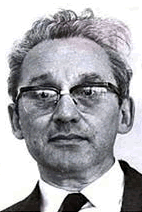
Paul Ricoeur, who died on Friday aged 92, was one of the most distinguished and prolific philosophers of his generation and published extensively on subjects ranging from structuralism, theology and phenomenology to psychoanalysis and hermeneutics; he was chiefly preoccupied with what is arguably the greatest philosophical theme - the meaning of life.
 I have discovered a new website that I thought I'd bring to your attention: Libertarians for Life. They have been around since 1976 so I'm a bit late in discovering them! Here is a clip from their self-description:
I have discovered a new website that I thought I'd bring to your attention: Libertarians for Life. They have been around since 1976 so I'm a bit late in discovering them! Here is a clip from their self-description:
In 1976, when she became pro-life, Doris Gordon founded Libertarians for Life "because some libertarian had to blow the whistle."
As libertarians, LFL's interest in the abortion debate is in everyone's unalienable rights. LFL's reasoning is philosophical, not religious. Some LFL associates are religious; others, such as Gordon, are atheists.
LFL focuses mainly on two central points: personhood (what "person" means, and why all preborn children are persons); and parental obligation (how parents incur it). From our answers we conclude that prenatal children have the right to the protection of the law.

 Over at the Belmont Club, Wretchard has bird-doged a UPI item reporting that King Fahd of Saudi Arabia is dead and has been dead since Wednesday May 25th.
Over at the Belmont Club, Wretchard has bird-doged a UPI item reporting that King Fahd of Saudi Arabia is dead and has been dead since Wednesday May 25th.

Photo/Michael Yon
Michelle Malkin has created a small Memorial Day tribute, made up of several links to help us remember our troops. The picture here was found at one of the links and I'll leave it to you to go read the caption. Beware... you won't leave with dry eyes.
UPDATE: Photo is by Michael Yon and can be seen, along with the story behind it, at his Blog. He's a writer working in Iraq with the troops and his blog is an amazing chronicle of the troops as they work there. Do check it out!
 Catholic Ragemonkey Fr. Shane Tharp has weighed in on the Penn & Teller fiasco. I have to say, Fr. Shane plays a mean keyboard! He really does some impressive slicing and dicing and those buffons ... er... illusionists deserve every bit of it! Kudos to Fr. Shane.
Catholic Ragemonkey Fr. Shane Tharp has weighed in on the Penn & Teller fiasco. I have to say, Fr. Shane plays a mean keyboard! He really does some impressive slicing and dicing and those buffons ... er... illusionists deserve every bit of it! Kudos to Fr. Shane.

Maybe, just maybe, there's hope for France after all. Could it be that this Chirac clown is only a temporary fever and delirium and that France may actually have a survival instinct after all?
Here is another really good source of info... includes a link to the EU Constitution itself...


 Apparently the latest version of Netscape 8 breaks the rendering function of IE. Description and solution are found here...
Apparently the latest version of Netscape 8 breaks the rendering function of IE. Description and solution are found here... You know, there was a time when I thought Penn & Teller did some really good work... they were funny, entertaining and smart. With this bit of free wheeling spew, though, I think I'm done with them. If they have nothing better to do than slander and savage a group of nuns who have done, and continue to do, more for the poor than Penn & Teller could even dream of doing, even with all that money they make savaging nuns, then I have no interest in perpetuating their hatred.
You know, there was a time when I thought Penn & Teller did some really good work... they were funny, entertaining and smart. With this bit of free wheeling spew, though, I think I'm done with them. If they have nothing better to do than slander and savage a group of nuns who have done, and continue to do, more for the poor than Penn & Teller could even dream of doing, even with all that money they make savaging nuns, then I have no interest in perpetuating their hatred.
With the date for E.U. negotiations now set, Turkey has taken bold steps to bring its laws into harmony with European Union standards. At the same time, however, Turkey's policies concerning religious freedom and the Greek Orthodox Church have come under increased international scrutiny, and so they should.Our concerns include property expropriation and continued closure of the Halki Seminary, obstacles to ownership and repair of churches, and the steadfast refusal of Turkish authorities to recognize the ecumenical status of the Orthodox patriarch.
Recently, I wrote about the “New Pope and the Catholic Sex Scandal” (go here). In that article, I opined that the recent re-activation of an investigation against the founder of the Legionaries of Christ—a congregation of priests within the Catholic Church—indicated that the Vatican took seriously the problem of the sex scandal not only as it manifested itself in the United States, but in other parts of the Church (and world), and was a cause for hope for the faithful concerned about the status of such cases within the Church.
Specifically, the article detailed the fact that a case against Maciel Marcial which had been shelved in 1999 by then Cardinal Ratzinger, the head of the Congregation of the Doctrine of the Faith, had been re-activated in December 2004, prior to the death of John Paul the Great. I should now add that Ratzinger, it seems, re-activated a number of cases in addition to the Maciel case at that time.